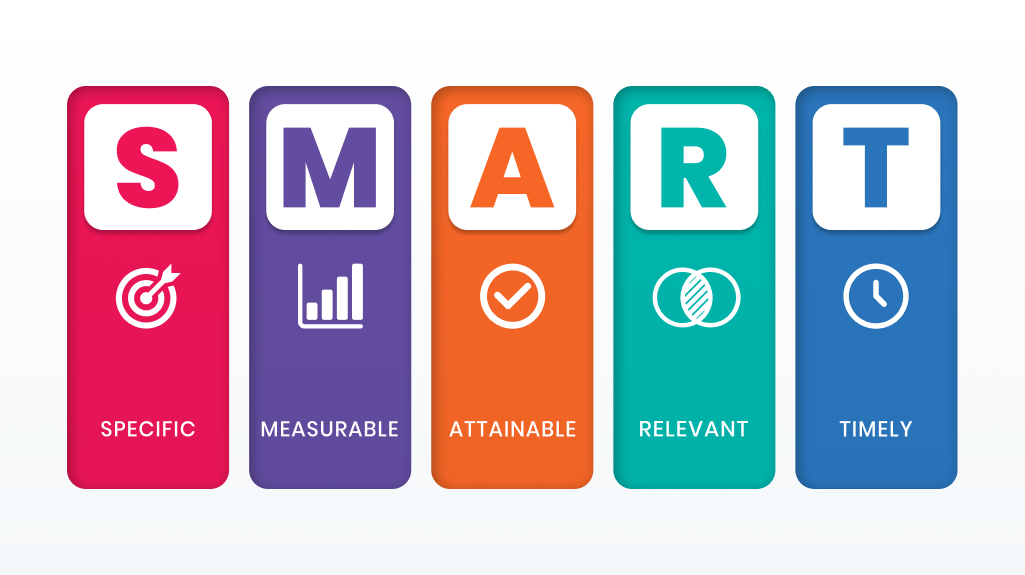In inbound marketing, one of the best ways to find success is with smart content planning. Ideally, every piece of your campaign works in harmony to drive leads and win over your customers. I’m talking content offers, blog posts, emails, social media posts, videos, podcasts, and every other content possibility you can dream of.
Planning all this content, and how it works together, is also one of the toughest tasks you’ll take on in marketing. Trust us. We’ve been there.
Too often, content marketers find ourselves caught up in the cycle of content creation. We really need a new blog post or a new content offer developed now, and we have no time to think about how it fits into our long-term strategic goals.
Unfortunately, this can sometimes lead to bad content.
Table of Contents
Content planning from the campaign level
Step 1: Revisit your goals
Step 2: Identify your buyer personas
Step 3: Create a list of target keywords
Step 4: Use keywords to brainstorm content ideas
Step 5: A campaign across channels
Step 6: Stay on schedule
Step 7: Report your results
Content planning from the campaign level
Creating content outside of your marketing strategy doesn’t mean that the writing is bad or the topic isn’t interesting. It’s just that without the context of a relevant offer, coordinated calls-to-action, and a real campaign effort, that absolutely-has-to-be-published-today blog post isn’t going to actually do anything for your business.
Nope, nothing. In fact, publishing weak, off-brand content likely will work against you. If one of your goals is to attract qualified buyers through SEO and convert them on your website, and you’ve just published a blog post about the company picnic, you may have wasted the resources meant to get you leads and new business, and also watered down your brand.
By mapping out content campaigns in advance, building each piece of content around specific keywords and search terms, and maintaining a publishing schedule, you can ensure that your inbound marketing efforts are driving you toward something. Rather than just filling space on your website, you’re creating customer leads!
“But how?” you ask.
Here are our steps to creating a great inbound content plan, and a content planning tool to get you started.
Step 1: Revisit your goals
Remember those goals your company set at the end of last year, spelling out KPIs and the number of leads you want to attract and convert each quarter? Great! The first step of the content creation process is identifying opportunities to achieve those goals through content. For example, your marketing department set the goal of increasing revenue by 5% in the next year, and aims to do that in part by increasing organic traffic to the website. Developing optimized content that’s relevant to your audience will play a major role in achieving that goal.
If you’re thinking, “Ermmm, we don’t have specific goals like that,” it’s ok. Your marketing team can develop them. Here at Raka, we use SMART goals as part of our process in developing client strategies, which stands for:

We all want our business to grow, but nailing down specific goals will make it much easier to get there. We put goals as the first step in content planning because without them, you’re just blindly posting content hoping it’ll magically convert leads for you, or get found through search. Writing good content is time consuming, so if you’re going to invest in it, make sure the content is getting you the best results possible.
Step 2: Identify your buyer personas
For the purposes of this post, we’re going to assume you’re building a content campaign for an amazing pest control company.
The first step in your content planning should be determining which of your buyer personas you will be targeting with this campaign. You have developed your buyer personas, right? If not, check out our free buyer persona template, and start creating!
The key here is to identify which segments of your audience you’ll be building your content for, so you can build the right types of content in the first place. For example, Antsy Annie is an environmentally conscious 30-40 something who lives in the suburbs of a New England city. She certainly doesn’t care about your ebook on the dangers of fire ants (they apparently don’t like pie), but she will be very interested in your infographic comparing organic to inorganic pesticides.
As you develop your content plan, think about topics that answer Annie’s most burning questions. “Which pesticides are pet-safe?” or “What are some organic pesticides that get the job done?” are both questions Annie is asking, but are also great blog post titles.
Step 3: Create a list of target keywords
Now that you’ve established goals and the target audience, start thinking about how this content is going to be found online. Search engine optimization, or SEO, is like the yeast in your bread. Without it, all your efforts will just fall flat.
Using the buyer personas’ questions they need answered as inspiration, head to a keyword search tool like Moz, SEMrush or Google Keyword Planner, and start entering terms your personas are most likely to search to answer those questions. Annie is likely Googling “pet safe pesticides” and “best organic pesticides,” so those are two good terms to start with. Whichever tool you are using, it will suggest other related keywords you can explore for further results.
A useful tool we’ve been using at Raka is HubSpot’s content strategy tool. With it you can enter a broad topic, like “organic pesticides,” and it will suggest related and more specific blog topics that will help build your website’s SEO authority on the subject. You can also use the content strategy tool to gather SEO data on topics, such as competition and search volume. By linking the finished blog posts to the tool you can see how each topic performed and more importantly, how many leads your company generated from the content.
However you do your SEO work, you will want to compile a list of relevant keywords to use in your content. You might be tempted to start with a long list of simple keywords, but a term like “pesticides” might be too broad and too often found on other, larger sites to get you the kind of traffic results you want. You want to add long-tail keywords that are more specific to the intent of your persona’s question, as well.
You will also want to take a look at “average monthly searches” which, as the name suggests, is the average number of times people are searching for this term. Remember, you are trying to get to the top of the search engine result pages for these terms and should therefore focus on the terms that best align with your audience’s search intent, not just the keywords with the most monthly searches.
Step 4: Use keywords to brainstorm content ideas

You’ve got a good list of about 50 keywords. Now what?
It’s time to come up with some content ideas.
The foundation of your content campaign should be a content offer, or another experience that requires a visitor to exchange contact information for a resource. This likely will be a piece of content or tool your buyer persona would want to download in their search to solve whatever problem or challenge they are facing. So now that you’ve identified your buyer persona for this campaign and some valuable keywords, start brainstorming ideas for what that offer should be.
Let’s say your research resulted in the following keywords:
- Organic pest control
- Homemade organic pesticides
- Natural pesticides for plants
We know Antsy Annie has concerns about using certain chemicals for pest control, and these keywords are all terms she might search to find a solution. One way to help your content bubble to the top of her SERP is by creating a content offer that includes these terms in the title, such as:
- A Comprehensive Guide to Organic Pest Control
- The 25 Best Homemade Organic Pesticides
- Video: How to Use Natural Pesticides for Plants
Creating a brainstorming document (Google Docs are great for this) for members of your team to weigh in can be helpful, particularly if you really don’t have the time for a big meeting about this. This is a great way to develop and refine topics, though it can get a little messy. It certainly helps keep your team on track by starting with a list of solid keywords. This way you get content ideas that are much more likely to get you the results you want, making content planning much easier.
Step 5: A campaign across channels
In essence, this is what is going to turn your content campaign from a scattershot effort into a focused machine. If set up correctly, your content plan will be the map that guides you through the distraction-filled waters of internet publishing.
With the content offer as your starting point, you can now map out the blog posts, emails, social media updates, and other content you will use in this campaign. Let’s say you’ve written the content offer, “A Comprehensive Guide to Organic Pest Control.” A blog post pointing to this content offer might be, “Does Organic Pest Control Really Work?” You can then post links to the blog post and the offer on your social media channels and send them out in the company’s email newsletter. By building CTAs embedded in emails and blog posts, you can further extend the reach of this content offer.
Here’s one of our CTAs for our free Content Planner content offer. Check it out!
Step 6: Stay on schedule
This is sometimes the tough part. You’ve got everything you need to get your campaign off the ground…except that social image isn’t quite finished yet, or someone didn’t have time to make the edits to that blog post, and…uh oh.
Hey, it happens. When your content plan is ready to go and you’re starting to assign blog posts and other pieces of content, set up a publishing calendar that your whole team has access to. Set deadlines and expect people to meet them, but be conscious of the fact that nothing goes entirely according to plan. At least with a content plan and calendar in place, you’ll be able to go back, check on the status of the campaign as a whole, and stick to the map so that your leads don’t get lost along the way.
Getting off schedule isn’t just the result of team members not having enough time. Sometimes it’s a matter of having too much content. An announcement about a new hire, an award, or even the photos from a recent day of service can easily hijack an editorial calendar, delaying previously scheduled content for another day. While it can be tough to see your team’s hard work sidelined, delaying this content can have a negative effect on SEO.
To move up in the search rankings, you need a steady flow of optimized content coming from your website with quality links both to your own site and other high-quality sites. When this flow is paused in favor of content that’s not optimized, it makes achieving SEO goals that much harder. Instead of delaying scheduled SEO content, work the culture and service posts into the calendar between your SEO content.
Step 7: Report your results
You’ve done your content planning, successfully launched your campaign, and are now a couple of months in. How are you going to quantify success? Thankfully, you established SMART goals at the outset, and can use analytics to see if you’ve hit your targets. Where were your big successes? What efforts missed the mark? All the data, whether good or bad, is helpful in determining how your company should move forward.
Beyond your SMART goals, other metrics can also she light on how the content performed. How many content offer downloads did you achieve and where did those leads came from? Did the company grow on social media or increase the click-through-rate on email? Collecting this data will inform your future content and tell you what works, what doesn’t, and which channels are a good fit for your content.
Creating content is hard. We get it. But if you start with specific goals and a plan for developing and creating important content, it keeps your team on track. It also shows your boss the content you create is data-driven and that it is designed to reach business goals.





